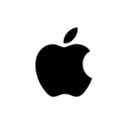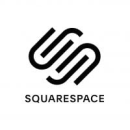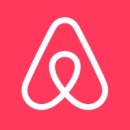“Product marketing” and “marketing a product” aren’t synonymous. Product marketing involves some traditional marketing, to be sure, but it’s really a hybrid, inter-departmental function that spans product, marketing, sales and customer success. Ultimately, product marketing is all about successfully bringing a product or feature to market and clearly communicating its benefits to potential or existing customers.
What Is Product Marketing?
Product marketing is the process of positioning a product or feature so customers will want to buy it. This often involves developing consistent branding among marketing and sales teams and tailoring messaging to speak to specific customer needs.
Product marketers work on product launches, but they often stick with a product for the long haul too, clarifying the value of every update and redesign. They can even help phase out unsuccessful features.
For a deeper dive into the realm of product marketing, check out these 15 real-world examples.
15 Product Marketing Examples
Location: New York, New York
ClassPass allows users to sign up for a ClassPass membership, which lets them bop between a variety of in-network workout spaces — instead of signing up for a particular gym or yoga studio. Every time members attend a studio class, ClassPass HQ pays the host fitness studio. In 2016, the ClassPass team realized that users with unlimited memberships paid ClassPass less than it paid studios.
ClassPass decided to change its model. Company personnel brainstormed replacement offerings and ramped up customer service capacity. Under the new ClassPass structure, every membership would cover a finite number of classes, but they would sell cheap packs of additional classes through their app.
ClassPass’s CEO also framed the transition, smartly, as a compliment to clients: “Many of you began to work out every other day – some of you even every single day! I applauded you for that. I applauded your drive, your desire to discover, your commitment to self. You were realizing the dream I always had for ClassPass.” The unlimited pass was savvily product-marketed, even as it was discontinued.
Location: Atlanta, Georgia
In the summer of 2014, Coca-Cola launched the Share a Coke marketing campaign. Essentially, the company replaced the classic Coca-Cola label, on select drinks, with a label that read “Share a Coke with ____.” In the blank, Coke slotted a rotation of the 250 most common names for American young adults. People rushed out to find cans that bore their names, or their loved ones’ names.
The campaign boosted Coke sales, an impressive feat considering they had held steady for a decade prior. What’s more, it amounted to a reinvention of a classic product — a go-to product marketing move. Since that initial summer, personalized labeling has become an annual tradition for the company.
Location: Cupertino, California
Apple rarely stumbles on the product marketing front, but its first-ever iPhone launch, back in 2007, was one of its most rousing successes. It started with Steve Jobs’ keynote at MacWorld 2007, where he pitched the iPhone as an “iPod, a phone, and an internet communicator” all in one. Though the device wasn’t the first touchscreen phone, camera phone, or internet-enabled phone, Jobs described it as a user-friendly fusion of all these things. In fact, he focused on convenience throughout his speech, enumerating the benefits and possibilities of each feature.
The rest of the iPhone launch was similarly effective — people camped outside Apple stores for the chance to buy one. Advertisements emphasized the phone’s most groundbreaking features, like the onscreen keyboard that pops up as needed. Meanwhile, every element — including Jobs’ keynote — addressed existing Mac and iPod enthusiasts, encouraging them to upgrade to the new device. That’s a hallmark of product marketing.
Location: Suwon-si, South Korea
Samsung took a risk in 2022 by introducing an unprecedented product in the form of the Samsung Freestyle — a small, portable projector with streaming capabilities. To get customers comfortable with this unfamiliar appliance, Samsung emphasized how the Freestyle caters to users’ lifestyles.
The company’s #YouMake campaign allowed customers to showcase how they adapted different Samsung products, including the Freestyle, to their needs. Samsung also interviewed the team behind the Freestyle, placing a human face to the product while highlighting how it caters to the lifestyle trends of Millennials and Zoomers. It also didn’t hurt that Oprah selected the Freestyle for her 2022 ‘favorite things’ list, which Samsung capitalized on as another opportunity to tout the product’s “flexibility.”
There was no guarantee the Freestyle would be a success, but Samsung delivered a masterclass on how to sell a brand-new product by using multiple channels while maintaining consistent, user-centric branding.
Location: Chicago, Illinois
Because product marketing is fairly new, the sector so far has only one awards ceremony, run by the Product Marketing Alliance. In 2019, G2’s three-person crew took home Best Product Marketing Team.
Before winning the award, G2’s team had been in action for six months. In that time, though, they launched an average of one new feature per week and reportedly persuaded more than 200 clients to add G2 integrations into their existing platform. One key to their success, according to team lead Yoni Solomon, was “finding a way to lean into the emotional components” of their product stories. How can the story of a new feature echo the classic hero’s journey of, say, The Odyssey? The pros at G2 have ideas.
Location: New York, New York
Simon Data is an enterprise customer data platform succeeding in the B2B space, thanks in part to the internal relationship between the marketing and product teams.
“The interplay between marketing strategy and emerging products is mutually developmental,” explained Simon Data co-founder Joshua Neckes. “Creative marketers push product development by hitting the limits of current product suites and providing feedback; new products provide new ways for existing marketers to work, facilitating the development of new strategies.”
One place marketing and product meet is in case studies. Though some companies only share these with vetted sales leads, Simon Data publicly posts its case studies for prospective clients to peruse. In one example, Simon Data shows how Vimeo used its segmentation tool to develop more personalized email outreach and increase the conversion rate of free account users to Vimeo’s seven-day free trial by 300 percent.
Location: New York, New York
In 2015, Squarespace took an unusual approach, turning a case study into a splashy Super Bowl commercial. It featured Jeff Bridges sitting at a sleeping person’s bedside, chanting one long “Om” and running a pestle around the edge of a metal bowl.
How is this a case study? Well, Bridges built the slick and scrollable website for his sleep sounds album, Sleeping Tapes, with Squarespace. It’s a real feat of engineering, too; visitors can stream the album, download it, order it on vinyl or just gaze upon a graphic of three Jeff Bridges nested inside each other, Russian Doll-style.
The cross-promotion made people aware not only of Squarespace’s brand, but specific features of its platform, like the option to embed purchasing and music streaming.
Location: Atlanta, Georgia
Mailchimp began as an email and newsletter platform but rebranded into an “all-in-one platform” for marketing when its product marketing team discovered that customers mainly use its tool to grow their businesses. This led to MailChimp’s “Growing Businesses” campaign, which highlights how its tools help small businesses grow. The campaign showcases the affordable all-in-one plans that allow users to create multichannel marketing campaigns and develop their audience.
Location: New York, New York
Harry’s lets prospective customers experience their razors and blades firsthand. The company sells shaving paraphernalia at direct-to-consumer prices, which has some inherent appeal — razor blades are so technically difficult to manufacture that they can be strikingly expensive. For those who want to purchase online, the company initially offers all new subscribers a special trial: a steeply discounted starter kit and free shipping. And for those who don’t like the product, they can return razors during a 30-day period and receive a full refund.
Location: San Francisco, California
Airbnb has changed the way people travel, allowing users to book vacation rentals, homes and apartments in an approachable way instead of always using hotels when they travel. Previously, the company prioritized top-rated vacation rentals that were located a certain distance from a city’s center. This meant users could only find rentals in urban areas.
Airbnb recognized users’ search patterns, as domestic stays in rural areas booked by U.S. guests in 2021 on Airbnb grew 110 percent compared to 2019, while Airbnb Hosts in rural counties in the U.S. earned over $3.5 billion. In response, the company prioritized rentals in the search rankings if they’re in areas that have a high density of Airbnb bookings. This shift to how Airbnb displays its products to users is an example of how data science and product marketing can work together.
Location: Menlo Park, California
Meta has cornered a major chunk of the online advertising market, but getting started on the company’s interface can be challenging — especially for small business owners with limited marketing experience. Newbies might wonder, for instance, why they can’t start an ad campaign from their personal Facebook page.
The detailed sequence of free tutorials from Facebook Blueprint has the answer: You need a Facebook business page to start advertising. They cover much more, too, like the art of selecting a target audience, budgeting and choosing between the various ad formats and placements. Often presented as videos packed with screenshots and illustrations, BluePrint’s multimedia tutorials cater to many types of learners with a mix of spoken instructions, visual aids and dropdown video transcripts. Overall, Blueprint content helps new users make the most of Facebook’s platform — a classic example of product marketing.
Location: Cambridge, Massachusetts
Early on, HubSpot focused on inbound marketing, which meant that its rigorously researched educational content attracted major audiences. Its articles, however, focused on general industry concepts. As a result, readers often left the site with no sense of what the company sold.
Rick Burnes, the company’s former director of product marketing, joined HubSpot to resolve this murkiness once and for all. He implemented a product marketing strategy that complemented the existing content strategy. It involved case studies and persuasive product descriptions (like “Why Choose HubSpot?”) that clarified the platform’s features and value. HubSpot is now a marketing industry mainstay whose growth platform boasts more than 205,000 users.
Location: San Jose, California
MetaData’s account-based marketing platform leverages AI to automate much of the marketing process, from data acquisition to sales attribution — it can even recommend strategy. That means as AI evolves, so does Metadata. The company keeps clients in the loop on the platform’s new features via an email newsletter, which complements an array of online tutorials, social media announcements and more. That ensures old clients can adopt new features and paves the way for subscription upgrades.
Location: San Francisco, California
Fenty Beauty has never used the word “inclusive” in its marketing materials, because the brand’s inclusivity goes without saying. The multi-billion-dollar beauty brand, led by singer and business mogul Rihanna, offers cosmetics for a wide variety of skin tones. Fenty foundations come in 50 shades. Each one was blended with “nuance” and real skin tones in mind, writes the CMO of Kendo Brands, Fenty’s parent company.
A diverse group can also see themselves reflected in Fenty’s marketing — a synergy between product and messaging that suggests a stellar product marketing team. The Fenty Beauty Instagram, for instance, features models with a vast spectrum of skin tones.
Location: Brighton Landing, Massachusetts
New Balance had to walk a fine line when releasing the 990v5 silhouette in 2019, noting how the latest version of a classic shoe stood out while paying homage to the 990 lineage that dates back to 1982. To accomplish this, the company crafted a minimalist marketing campaign. Various 990v5 ads display a plain background and feature concise copy to avoid distracting customers from the subtle tweaks made to the shoe’s facade. The reserved color scheme and content suggest not much needs to be said about the shoe, letting its reputation speak for itself.
One of the ads also delivers a memorable line: “Worn by supermodels in London and dads in Ohio.” The shoe’s worldwide fame and its down-to-earth versatility are both captured in this compact sentence, driving home the shoe’s dominance and enduring nature in the industry. By saying a lot with limited visual elements and succinct content, New Balance reminds its customers why the 990 remains one of the original, premium dad shoes on the market.
Frequently Asked Questions
What is an example of product marketing?
Say a company is rolling out a new GPS-enabled dog collar. At this point, a product marketer has already worked on user and market research to ensure that the collar fulfills consumer needs and stands out in the existing collar marketplace.
As the launch approaches, a product marketer trains sales and marketing teams to clearly and persuasively articulate the collar’s charms. Why should people buy it over an off-brand version? How can a dog owner — or a dog — get the most out of it? Product marketers craft answers to those questions and others, which can provide fodder for traditional marketing.
What is product marketing vs. brand marketing?
Product marketing focuses on marketing specific products, so they enjoy successful launches and generate sales. Brand marketing refers to monitoring a company’s reputation among customers to ensure customers have a strong and positive relationship with a business’ brand as a whole.
What is the difference between product marketing and field marketing?
Field marketing is when teams expose existing and potential customers to products in physical settings like shopping centers, stores and college campuses. Product marketing can encompass online marketing activities like developing digital content and ad campaigns. As a result, field marketing complements product marketing instead of replacing it.


















